Massachusetts is a small state rich in history and home to beautiful scenic regions and many types of fauna and flora. Across habitats from coastal forests to rolling hills, there is a plant for all tastes in the state. This article will discuss some of the most popular native plants in Massachusetts and why they are so special.
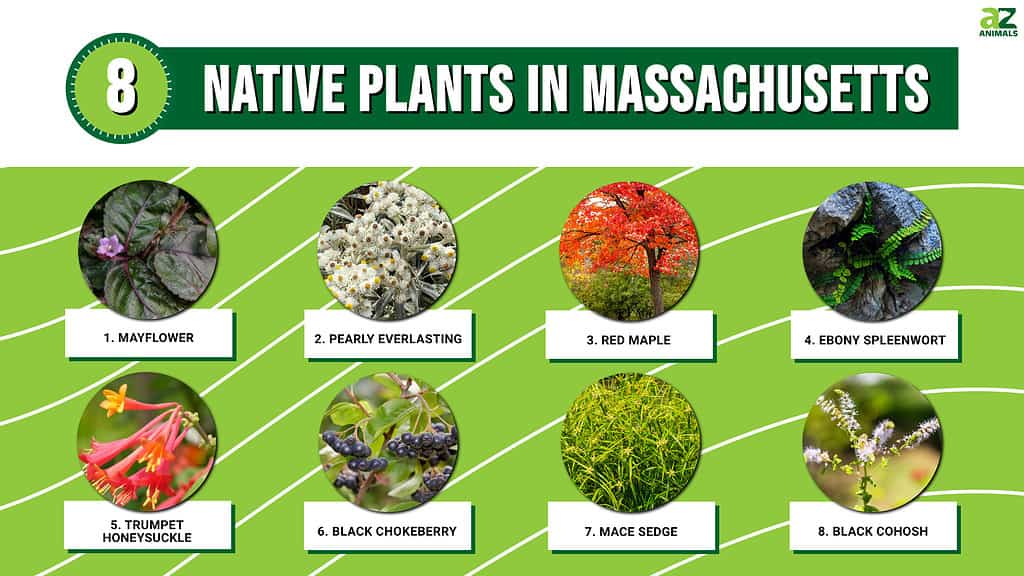
1. Mayflower (Epigaea repens)
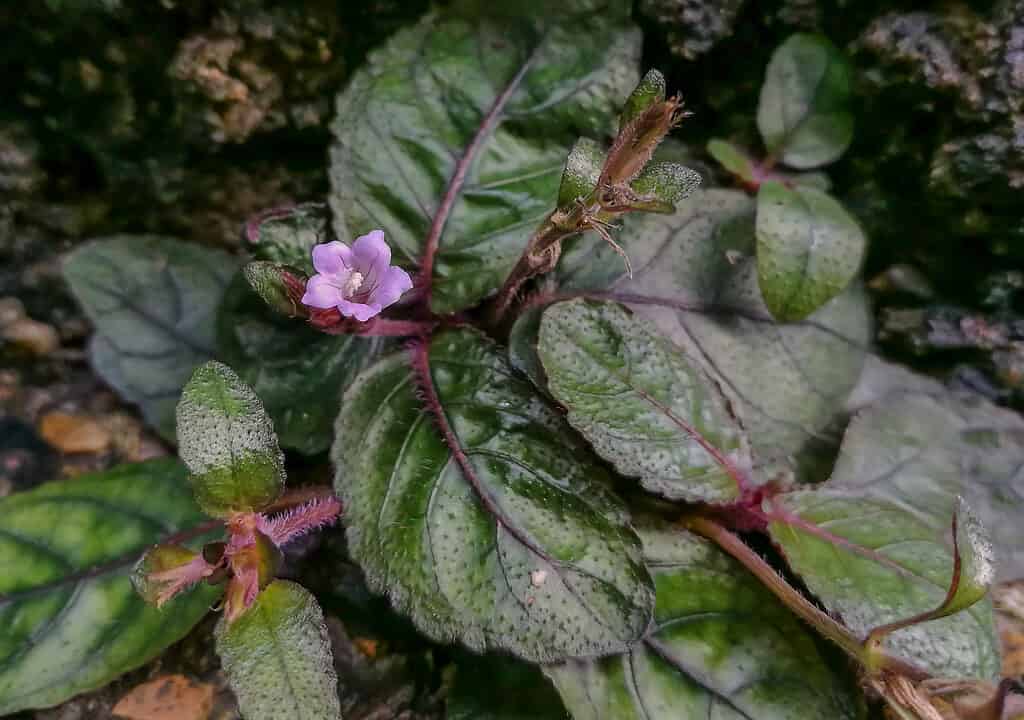
The mayflower can be found in wooded areas in Massachusetts.
©Jak149/Shutterstock.com
First on the list is the Massachusetts state flower. The Trailing Arbutus, or mayflower (Epigaea repens), is a low-growing evergreen plant with woody stems that spread along the ground and produce pink or white flowers in the spring. These flowers are typically about 0.4 to 0.8 inches in diameter and have five petals.
The flowers are arranged in clusters and are fairly inconspicuous. Despite their small size, the mayflower’s flowers are quite fragrant, giving off a sweet, fruity aroma.
The mayflower can be found in wooded areas, particularly in the northeastern United States and Canada. It thrives in acidic soils and partial shade and is often found growing under trees or in other shaded areas. The plant is known for its ability to tolerate cold temperatures and can be found growing in regions as far north as Quebec and Labrador.
Humans have long valued the mayflower for its medicinal properties. Native American tribes used the plant’s leaves and roots to treat many ailments, including stomach and respiratory problems. (Please note: A-Z Animals does not recommend plants or herbs for medicinal or health use. We present the information for academic and historical purposes only.)
Unfortunately, in many areas where the flower used to be prominent, the mayflower is now disappearing — even though it is protected by Massachusetts law. This is primarily due to the mayflower’s sensitivity to environmental disturbances, such as grazing and lumbering. Since the flower is sensitive, cultivating it is difficult.
2. Pearly Everlasting (Anaphalis margaritacea)
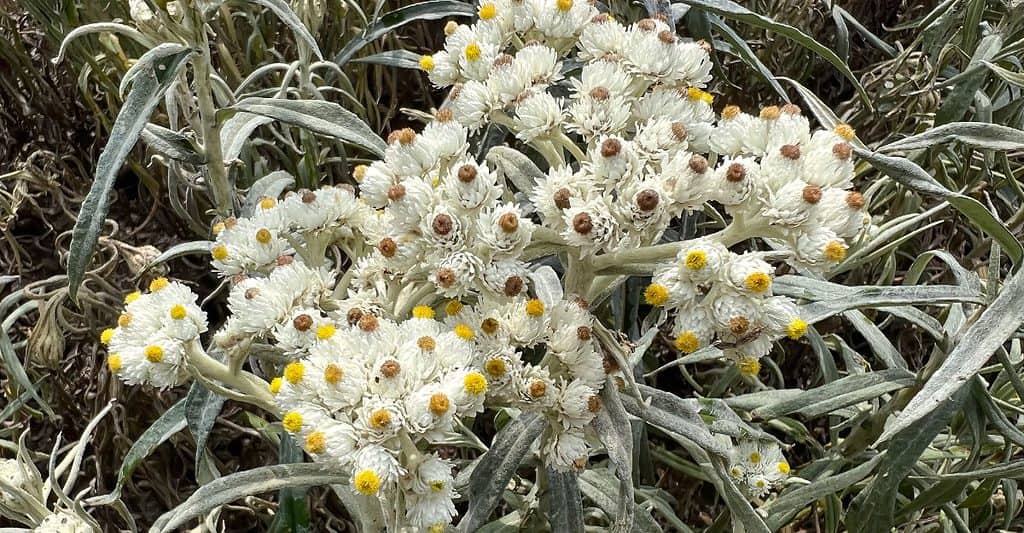
The pearly everlasting plant can tolerate a wide range of conditions, including dry and rocky soils.
©iStock.com/Wirestock
Pearly everlasting (Anaphalis margaritacea) is a perennial flowering plant and a member of the Aster family. It is a herbaceous plant with soft, green stems and leaves that die back to the root each year.
The plant gets its name from its small, pearly-white flowers, which bloom from late summer to early fall. These flowers are arranged in flat-topped clusters and have a long flowering period, making them a popular choice for flower arrangements and dried bouquets. The plant also has long, narrow leaves covered in white hairs, giving it a silvery appearance.
Pearly everlasting is often found growing in open, sunny areas such as meadows, fields, and roadsides. It is a hardy plant that can tolerate a wide range of soil conditions, including dry and rocky soils. The plant is also drought-resistant and can withstand prolonged periods of dry weather.
In addition to its attractive flowers, pearly everlasting has also been used for various medicinal purposes. For example, the plant’s leaves and roots are thought to treat ailments such as colds, coughs, and upset stomachs.
For best results, plant pearly everlasting in an area with plenty of sunlight. The plant thrives in full sun and will produce more flowers in sunny conditions. It can tolerate many soil types but prefers moist, well-draining soil. Avoid planting in areas where the soil is wet or boggy, as this can cause the roots to rot.
3. Red Maple (Acer rubrum)

Red maple trees are known for their beautiful fall foliage.
©iStock.com/JUN DONG
The red maple (Acer rubrum) is a deciduous tree native to Massachusetts. It is a member of the Sapindaceae family, which includes other well-known trees such as horse chestnuts and buckeyes. Red maple is a medium to large-sized tree with a typical mature height of 40-70 feet, but in some cases, it can grow up to 120 feet. It has a rounded crown and a straight trunk, with smooth, gray bark that becomes ridged as the tree ages.
The red maple is known for its beautiful fall foliage, which turns bright red or orange, hence its name. The tree’s leaves are palmately lobed, with three to five pointed lobes and a serrated edge. The tree’s flowers are small with red petals and usually bloom in late winter.
Red maple is commonly found in various habitats, including woodlands, swamps, and riverbanks. It is a hardy tree that can tolerate a wide range of soil conditions and can grow in full sun or partial shade. The tree is also tolerant of wet soils and is often found growing in low-lying areas or near bodies of water.
Red maple is a popular choice for landscaping due to its attractive fall color and adaptability to various growing conditions. The tree is also valued for its timber, which is used to make furniture, flooring, and paper products.
The red maple is a desirable addition to any outdoor space and deserves its reputation as one of North America’s most majestic trees.
4. Ebony Spleenwort (Asplenium platyneuron)
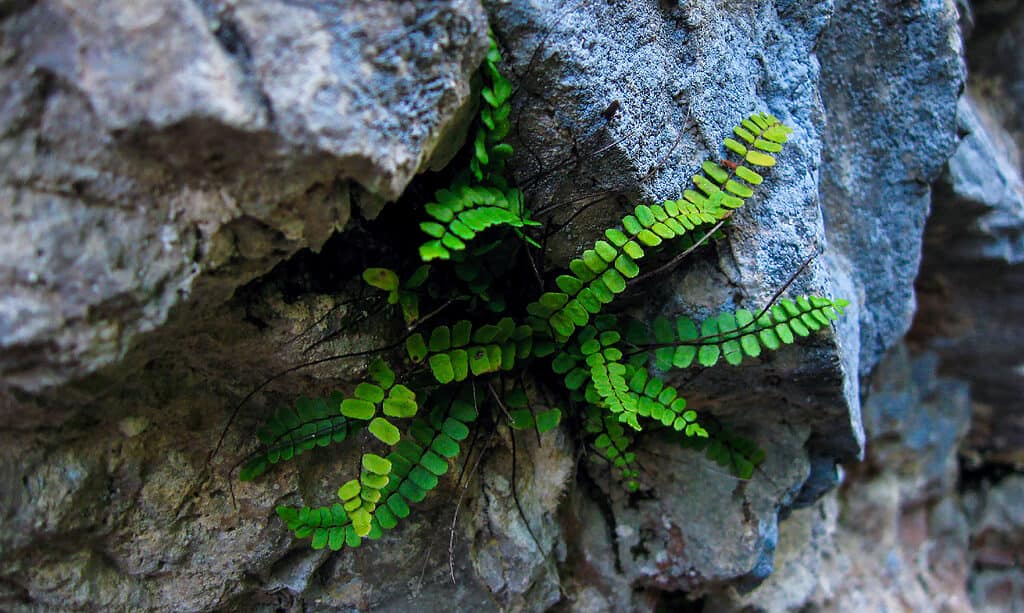
Ebony spleenwort makes it a popular choice for gardens because it is easy to care for and resilient.
©Riccardo Bondavalli/Shutterstock.com
The ebony spleenwort (Asplenium platyneuron) is an evergreen fern native to North America, Europe, and Asia. It is a member of the spleenwort family (Aspleniaceae), known for its delicate, lacy fronds.
The ebony spleenwort is a versatile plant that can tolerate many different conditions, from full sun to full shade. It is often found growing in rocky or gravelly soil and is particularly well-suited to growing on cliffs, ledges, and walls. The plant’s root system is made up of rhizomes, which are horizontal underground stems that allow the plant to spread and form clumps.
The fronds of the ebony spleenwort are lance-shaped and can grow up to a foot in length. The leaflets are narrow, dark green, and arranged in a spiral pattern along the frond’s central stem. The plant produces spores on the undersides of its fronds, which are used for reproduction.
In addition to its attractive fronds, the ebony spleenwort is also known for its resistance to common pests and diseases. As it is resilient and easy to care for, it is a popular choice for gardens and landscapes. The ebony spleenwort requires little maintenance, preferring moist, well-drained soil and benefitting from regular watering, especially during dry periods. You can also fertilize it with a balanced fertilizer to promote healthy growth.
Overall, the ebony spleenwort is a durable and attractive plant that adds beauty to any garden.
5. Trumpet Honeysuckle (Lonicera sempervirens)

The trumpet honeysuckle is an easy-to-care native plant that adds natural beauty to gardens.
©shepherdsatellite/Shutterstock.com
The trumpet honeysuckle (Lonicera sempervirens) grows quickly and easily, boasting tons of beautiful trumpet-shaped flowers that hummingbirds, bees, and butterflies love.
Plus, its coral or red blooms can really brighten any outdoor space! It can even tolerate more shade than most other flowering vines and drought conditions, making it an excellent choice for those who don’t quite have a green thumb but would still like to add something special to their yard.
The flowers grow to around 1 to 3 inches long, are non-fragrant, and usually bloom from spring to summer.
This vine grows quickly and may reach up to 20 feet in height once mature, making it great for covering fences and other structures if desired. The trumpet honeysuckle is an easy-to-care native plant that will add natural beauty while attracting birds.
6. Black Chokeberry (Aronia melanocarpa)
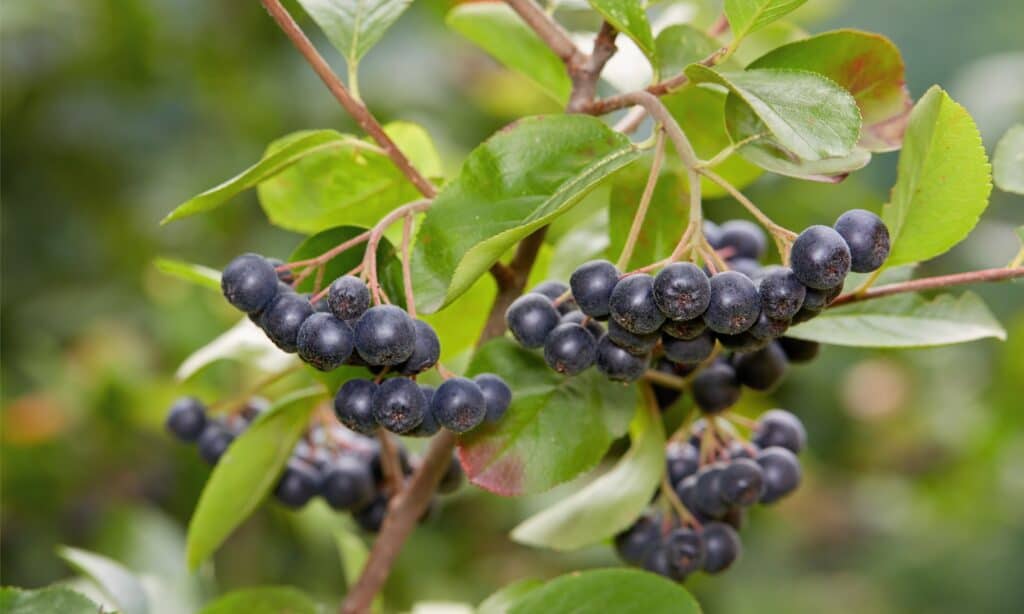
Chokeberry trees grow berries in black, purple, or red.
©iStock.com/gojak
Black chokeberry (Aronia melanocarpa) is a deciduous shrub native to North America, including Massachusetts. It is a member of the Rosaceae family. Black chokeberry is named for its fruit, which is small, black berries that are somewhat sour and astringent. This berry can be consumed by humans and is used in several recipes. Most recipes call for a touch of sugar to cancel out the sourness!
Black chokeberry is a small shrub, typically growing to a height of 4 to 8 feet. It has dark green, glossy leaves and clusters of white flowers in the spring. Blackberries follow the flowers in the fall. The berries are a favorite food of many birds, so the shrub is a great way to attract wildlife.
Black chokeberry is known for its high levels of antioxidants, which are thought to have numerous health benefits. The berries are rich in vitamins A, C, E, and B complex and low in fat and sugar. Some studies have suggested that consuming black chokeberry may help to lower cholesterol levels and improve heart health.
Overall, the black chokeberry is a versatile and useful plant. Many people use its berries in jams and smoothies, and its attractive appearance makes it a popular choice for landscaping.
7. Mace Sedge (Carex grayi)
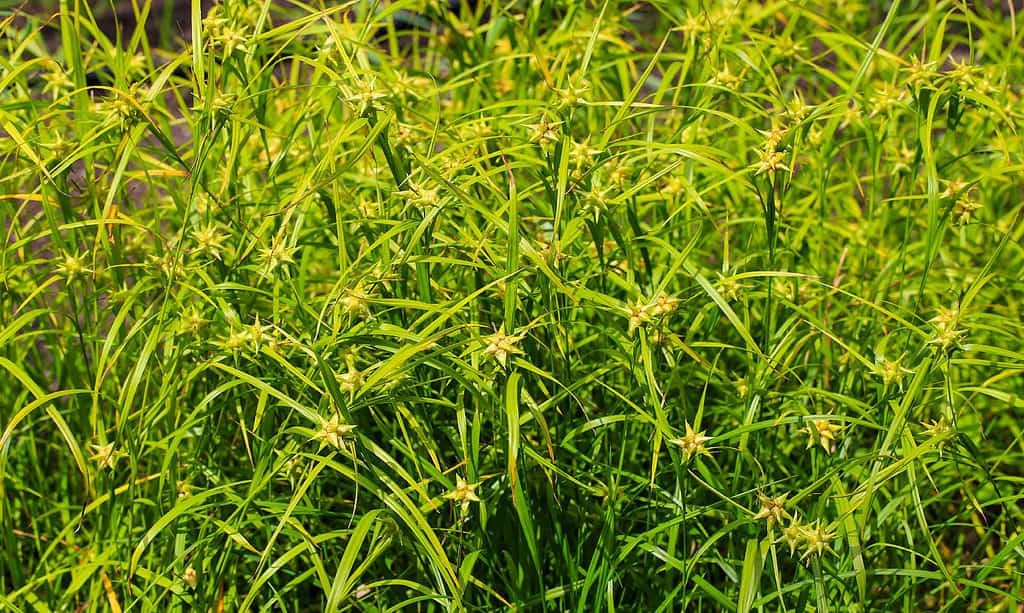
The mace sedge is a hardy plant that can tolerate a wide range of conditions.
©Traveller70/Shutterstock.com
Mace sedge (Carex grayi) is a species of flowering plant in the sedge family (Cyperaceae). It can be found in wooded areas, fields, and wetlands across Massachusetts.
Mace sedge has a tufted growth habit, with narrow, grass-like leaves that grow from a central point at the base of the plant. The leaves are typically dark green and can grow to a length of around 2 feet. In the spring, the plant produces small, greenish flowers arranged in dense, spike-like clusters. The buds then give way to small, pale green seed heads. These seed heads resemble spiked clubs or three-dimensional stars.
Mace sedge is not commonly used in landscaping but can be a valuable addition to native plant gardens and naturalized areas. It is a hardy plant and can tolerate a wide range of conditions, including occasionally wet or moist soil and full sun to partial shade. Once established, this plant requires very little care and can tolerate drought; it can even re-seed if in the proper conditions. However, it will not thrive in dry soil.
This accent plant is often also used in fresh and dry flower arrangements. Their spiked seed heads certainly add a lot of character to traditional flower arrangements.
8. Black Cohosh (Actaea racemosa)
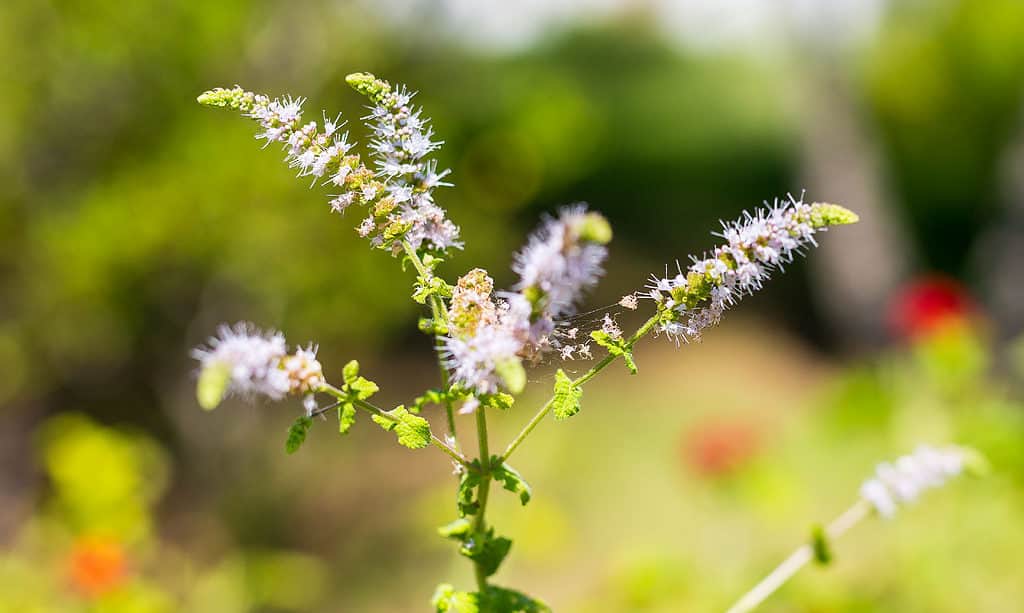
Black cohosh has been used for centuries by Native American tribes for medicinal purposes.
©iStock.com/Giorez
Black cohosh (Actaea racemosa) is a member of the buttercup family (Ranunculaceae) and is closely related to other plants such as baneberry and bugbane. Black cohosh is a tall, erect plant with clusters of small white flowers that bloom in the summer. The plant gets its name from the dark, nearly black color of its underground stems, known as rhizomes.
Black cohosh is most commonly used for its medicinal properties. The plant has been used for centuries by Native American tribes for various purposes, including treating menstrual cramps, menopausal symptoms, and other gynecological conditions. In recent years, it has gained popularity as a natural treatment for hot flashes and other signs of menopause. (Please note: A-Z Animals does not recommend plants or herbs for medicinal or health use. We present the following information for academic and historical purposes only.)
Taking care of the black cohosh is essential for the plant’s health and well-being. The bad news is that it can be challenging to do so, especially for busy people. This plant is not for those that would prefer low-maintenance plants. It prefers partial shade or dappled sunlight. Black cohosh needs regular maintenance, such as ensuring the soil stays moist, trimming at least twice per year, and applying slow-release fertilizer twice in summer.
Although these tasks may sound daunting initially, keeping a few simple tips in mind can make caring for black cohosh a breeze.
Unfortunately, due to an increase in demand and a limited amount of natural habitat for growing wild plants, many areas are experiencing shortages in available black cohosh stocks, which can make it difficult to find quality sources of this perennial.
Summary of 8 Native Plants in Massachusetts
Here’s a recap of the eight plants native to Massachusetts that we took a look at.
| Number | Native Species | Scientific Name |
|---|---|---|
| 1 | Mayflower | Epigaea repens |
| 2 | Pearly Everlasting | Anaphalis margaritacea |
| 3 | Red Maple | Acer rubrum |
| 4 | Ebony Spleenwort | Asplenium platyneuron |
| 5 | Trumpet Honeysuckle | Lonicera sempervirens |
| 6 | Black Chokeberry | Aronia melanocarpa |
| 7 | Mace Sedge | Carex grayi |
| 8 | Black Cohosh | Actaea racemosa |
The photo featured at the top of this post is © iStock.com/kazakovmaksim
Thank you for reading! Have some feedback for us? Contact the AZ Animals editorial team.






